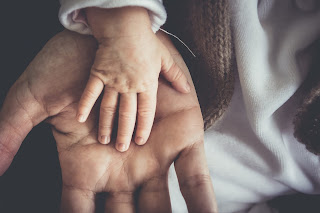The Dark Knight Trilogy: A Spiritual Perspective
Everybody wants to be The Batman! Not because they want to don a cape and fight crime, but because he embodies traits that are universally aspirational; stuff like perseverance, justice, morality, intellect, and resilience. His journey resonates with people across cultures because it reflects fundamental human struggles and ambitions in climbing up Maslow’s hierarchy.
Bruce Wayne’s journey reminds us that the path to self-realization is laden with challenges, it’s a reflection of the human spirit’s capacity for growth and transcendence. And who better than Christopher Nolan to provide a layered exploration of the Dark Knight’s human condition, transformation, and the pursuit of purpose!
Viewed through the lens of philosophy, Bruce’s evolution from a vengeful young man to a selfless protector can be interpreted as a journey towards self-realization. The trilogy maps this spiritual path through the principles of Dharma, Karma, and Moksha.
Batman Begins: The Pursuit of Dharma
“It’s not who I am underneath, but what I do that defines me.”
Dharma represents duty, righteousness and moral order. Haunted by his parents’ murder, Bruce initially seeks revenge, but eventually realizes that his purpose lies in protecting Gotham.
His training with the League of Shadows resembles a spiritual seeker learning discipline under a guru. However, Ra’s al Ghul represents a flawed guru, whose teachings skew toward destruction rather than balance. Bruce rejects this path, choosing instead to become a protector who restores justice without resorting to extremism.
This decision marks Bruce’s embrace of his dharma. He recognizes that his wealth, skills, and fearlessness must be used not for personal vendetta, but for the greater good.
The Dark Knight: The Struggle with Karma
“You either die a hero or live long enough to see yourself become the villain.”
In The Dark Knight, Bruce confronts the moral complexities of karma, the law of cause and effect. He is forced to question the consequences of his actions; from Batman impersonators risking their lives to letting Harvey Dent be a bait, and losing his one hope for a normal life with Rachel’s death.
The Joker, an embodiment of chaos, someone determined to bringing people down to their worst selves, echoes the concept of maya (illusion). His schemes and plans are always a bait-and-switch (including his narrative about himself being “a dog chasing cars”), aimed at confusing and corrupting even the best of people. The ferry scene, where passengers must decide whether to destroy another boat-full of passengers to save themselves, is a direct test of collective karma.
Bruce's decision to take the blame for Harvey Dent’s crimes in the climax of the movie is a profound example of nishkama karma, selfless action performed without attachment to the outcome. By doing so, he preserves hope for Gotham at the great personal cost of sacrificing his reputation.
The Dark Knight Rises: The Path to Moksha
“Why do we fall? So we can learn to pick ourselves up.”
The final chapter of the trilogy represents Bruce’s ascent towards moksha, a true liberation. Broken physically and mentally by Bane, Bruce is cast into a prison pit, a symbolic samsara (cycle of life and death). His climb out of the pit without a rope is a metaphor for spiritual rebirth. By letting go of his fear of death, Bruce transcends his limitations and reclaims his purpose of protecting Gotham.
At the end of the film, Bruce stages Batman’s death, symbolizing the dissolution of ahamkara (ego) and his ability to completely let go of the superhero identity. By passing the mantle to John Blake, he ensures Gotham’s protection, while freeing himself from the burden. His (hopefully) quiet life with Selina Kyle as Bruce represents moksha, a state of peace and liberation for Batman.
The beauty of this trilogy lies in its depth. While rooted in the mean gritty streets of Gotham, it isn’t just a superhero saga, but its themes resonate with spiritual truths. The story of Bruce Wayne is not just about a man donning a cape and cowl; it’s about the eternal struggle to align one’s actions with higher ideals, to overcome personal darkness, and to ultimately find peace.



Comments